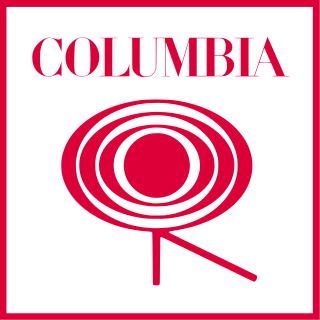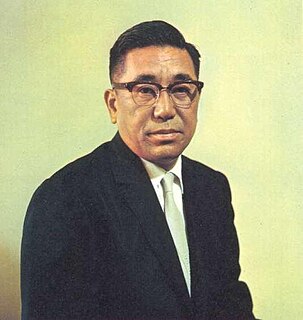
The Dark Side of the Moon is the eighth studio album by the English rock band Pink Floyd, released on 1 March 1973 by Harvest Records. Primarily developed during live performances, the band premiered an early version of the suite several months before recording began. The record was conceived as an album that focused on the pressures faced by the band during their arduous lifestyle, and dealing with the apparent mental health problems suffered by former band member Syd Barrett, who departed the group in 1968. New material was recorded in two sessions in 1972 and 1973 at EMI Studios in London.

The 8-track tape is a magnetic-tape sound recording technology that was popular from the mid-1960s to the early 1980s, when the compact cassette, which pre-dated the 8-track system, surpassed it in popularity for pre-recorded music. The format is obsolete and was relatively unknown outside the United States, the United Kingdom, Canada, New Zealand, Australia, Mexico, Spain, France, Germany, Italy, Sweden and Japan. The main advantage of the 8-track tape cartridge was that it did not have to be "flipped over" to play other tracks.

Columbia Records is an American record label owned by Sony Music Entertainment, a subsidiary of Sony Corporation of America, the North American division of Japanese conglomerate Sony. It was founded on January 15, 1889, evolving from the American Graphophone Company, the successor to the Volta Graphophone Company. Columbia is the oldest surviving brand name in the recorded sound business, and the second major company to produce records. From 1961 to 1991, its recordings were released outside North America under the name CBS Records to avoid confusion with EMI's Columbia Graphophone Company. Columbia is one of Sony Music's four flagship record labels, alongside former longtime rival RCA Records, as well as Arista Records and Epic Records.

Quadraphonic sound – equivalent to what is now called 4.0 surround sound – uses four audio channels in which speakers are positioned at the four corners of a listening space. The system allows for the reproduction of sound signals that are independent of one another.

"Money" is a song by the English progressive rock band Pink Floyd from their 1973 album The Dark Side of the Moon. Written by Roger Waters, it opened side two of the original album.

Pye Records was a British record label. Its best known artists were Lonnie Donegan (1956–1969), Petula Clark (1957–1971), the Searchers (1963–1967), the Kinks (1964–1971), Sandie Shaw (1964–1971), Status Quo (1968–1971) and Brotherhood of Man (1975–1979). The label changed its name to PRT Records in 1980, before being briefly reactivated as Pye Records in 2006.

Sansui Electric Co., Ltd. was a Japanese manufacturer of audio and video equipment. Headquartered in Tokyo, Japan, it was part of the Bermuda conglomerate.

Mobile Fidelity Sound Lab is a record label specializing in the production of audiophile issues. The company is best known for its reissued vinyl LP records, compact discs, and Super Audio CDs but has also produced other formats.

Hergest Ridge is the second studio album by English musician and songwriter Mike Oldfield, released on 28 August 1974 by Virgin Records. The unexpected commercial and critical success of his debut album Tubular Bells (1973) affected Oldfield, who decided against touring and avoided the press with his newfound fame. Instead, he retreated to Hergest Ridge on the England–Wales border and wrote the follow-up, which he recorded in 1974 at The Manor in Oxfordshire, with Tom Newman returning as co-producer. Similar to Oldfield's first, the album is a single composition split into two parts covering different moods and musical styles.

Ommadawn is the third studio album by English musician, multi-instrumentalist and songwriter Mike Oldfield, released on 25 October 1975 on Virgin Records.
James K.A. Guthrie is an English recording engineer and record producer best known for his work with the progressive rock band Pink Floyd serving as a producer and engineer for the band since 1978. He is the owner and operator of das boot recording in Lake Tahoe, California. Married to Melissa Kathryn (Braun) Guthrie and parent of two cats, Bert & Jack. Original music and scoring.
Games for May was a rock music concert that took place at the Queen Elizabeth Hall on 12 May 1967, three months after the venue opened. It was one of the first significant concert events held by Pink Floyd. The even was organized by Pink Floyd managers Andrew King and Peter Jenner of Blackhill Enterprises, and promoted by classical music promoter Christopher Hunt.

The LP is an analog sound storage medium, a phonograph record format characterized by: a speed of 33+1⁄3 rpm; a 12- or 10-inch diameter; use of the "microgroove" groove specification; and a vinyl composition disk. Introduced by Columbia in 1948, it was soon adopted as a new standard by the entire record industry. Apart from a few relatively minor refinements and the important later addition of stereophonic sound, it remained the standard format for record albums until its gradual replacement from the 1980s to the early 2000s, first by cassettes, then by compact discs, and finally by digital music distribution.

Boxed is a 1976 compilation album of music written and performed by Mike Oldfield. It features four channel quadraphonic remix versions of his first three albums:Tubular Bells, Hergest Ridge and Ommadawn. An additional fourth LP contains new musical collaborations with other artists.

SQ Quadraphonic was a matrix 4-channel quadraphonic sound system for vinyl LP records. It was introduced by CBS Records in 1971. Many recordings using this technology were released on LP during the 1970s.
Pink Floyd bootleg recordings are the collections of audio and video recordings of musical performances by the British rock band Pink Floyd, which were never officially released by the band. The recordings consist of both live performances and outtakes from studio sessions unavailable in official releases. In some cases, certain bootleg recordings may be highly prized among collectors, as at least 40 songs composed by Pink Floyd have never been officially released.

Quadraphonic Sound was a matrix 4-channel quadraphonic sound system for phonograph records. The system was based on technology created by Peter Scheiber, but further developed by engineer Ryosuke Ito of Sansui in the early 1970s.

Compatible Discrete 4, also known as Quadradisc or CD-4 was as a discrete four-channel quadraphonic system for phonograph records. The system was created by JVC and RCA in 1971 and introduced in May 1972. Hundreds of recordings using this technology were released on LP during the 1970s.
Stereo-4, also known as EV or EV-4, was a matrix 4-channel quadraphonic sound system developed in 1970 by Leonard Feldman and Jon Fixler.

UD-4 was a discrete four-channel quadraphonic sound system for phonograph records introduced by Nippon Columbia (Denon) in 1974. This system had some similarities with the more successful CD-4 process introduced by JVC and RCA in 1972.















